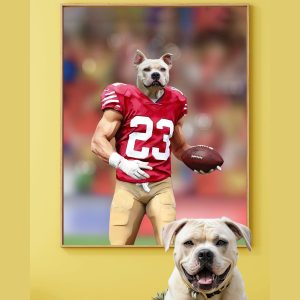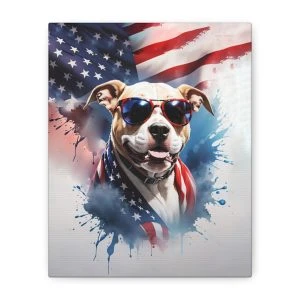Brown and White Pitbull
Brown and White Pitbulls: How Do They Get Their Appearance?
Pitbulls, like all dogs, get their coloring from genes passed down from their parents. The color of a dog’s fur is determined by the presence or absence of certain pigments called melanins, produced by cells called melanocytes. The two types of melanins are eumelanin (black or brown) and phaeomelanin (red or yellow). The specific pattern of coloring in a Pitbull is determined by the interaction of several genes that control the distribution, quantity, and type of melanin produced in the fur.
In the case of brown and white Pitbulls, the presence of eumelanin in their fur gives it a brown color, while the absence of eumelanin results in white fur. The distribution and pattern of these pigments provide each Pit with Bull its unique appearance, and the variation in color and pattern results from the interaction of multiple genes.
The specific genes responsible for producing brown and white fur in Pitbulls have not been identified, but it is known that several genes control the expression of melanin pigments in the fur.
The interaction of these genes determines the distribution and pattern of brown and white fur in a Pitbull. Some genes may inhibit melanin production in certain areas, leading to white fur, while others may stimulate melanin production in other areas, resulting in brown fur. The expression of these genes can be influenced by environmental factors such as exposure to sunlight but is primarily determined by the dog’s genetic makeup.
It is also important to note that the presence of other genes can influence the expression of these genes. For example, a gene that produces a specific pattern of white fur in a Pitbull may also affect the expression of genes responsible for making brown hair.
Brown and White Pitbull Puppies
Brown and White Pitbull puppies are adorable, just like any other puppies! As with all puppies, they will go through a period of rapid growth and development, both physically and mentally.
It’s essential to provide them with proper care, nutrition, and training to ensure they grow up to be healthy and well-behaved adult dogs.
During their first few months, Pitbull puppies brown and white must be fed a high-quality diet to support their rapid growth and development.
They will also need to be given plenty of opportunities for physical exercise, such as playing and going for walks, to help them build muscle and develop coordination.
Socialization is also an essential aspect of raising a Pitbull puppy. Introducing them to various people, animals, and environments early will help them become confident, well-adjusted dogs. Basic obedience training can also help establish good behavior and build a strong bond between you and your puppy.
It’s essential to remember that each Pitbull puppy will have its unique personality and characteristics regardless of its coat color. With proper care and training, a brown and white Pitbull puppy has the potential to grow into a loyal and affectionate companion.
Red Nose Pitbull White and Brown
A “red nose” Pitbull is a subtype of the American Pitbull Terrier breed characterized by a red or reddish-brown nose. The color of a Pitbull’s nose is determined by the presence of a pigment called melanin, which can range from black to reddish-brown. The white and brown red nose is a recessive gene less common in the breed than the black nose.
A white and brown Pitbull with a red nose would have the combination of these physical traits. The Pitbull’s fur color would be a combination of white and brown, and the nose would have a red or reddish-brown color.
It’s important to note that the red nose and white and brown coloring are not considered to impact the dog’s behavior, temperament, or abilities. A combination of genetics, socialization, training, and environment determines these characteristics.
In Conclusion
Pitbulls, as a breed, are known for their loyalty, affection, playfulness, energy, intelligence, protective nature, and strong will. These characteristics are generalizations and can vary from individual to individual. The Pitbull brown and white coloring of a Pitbull does not directly impact its unique characteristics.
When raising a white and brown Pitbull puppy, it’s crucial to provide proper care, nutrition, and training. Socialization is also critical to raising a Pitbull puppy; basic obedience training can help establish good behavior. Each Pitbull puppy brown and white will have its unique personality and characteristics regardless of its coat color.
Our website is all about Pitbull dogs. If you’re a Pitbull lover and looking for more information about Pitbull types, this is the best place for you. Learn more about the Pitbull Chihuahua Mix, Pitbull Breeds, Micro Bully, Gator Pitbull, and many others. Please navigate to Pitbull Types on the menu to find them all.

Mandy has lived with pitbulls her whole life, and she has amassed a wealth of experience and knowledge about these magnificent animals. Having had the pleasure of owning and caring for numerous pitbulls over the years, she has come to understand their unique characteristics, behaviors, and needs. Read more





























































